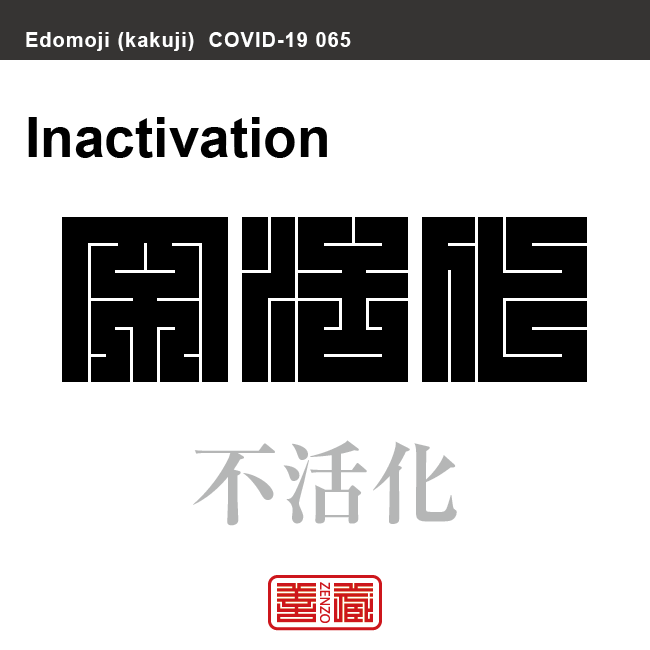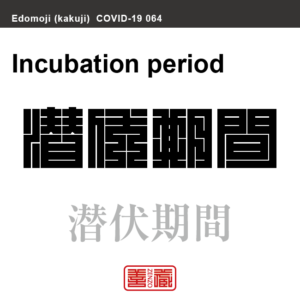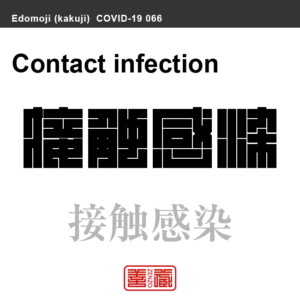不活化 ふかつか 角字で新型コロナウイルス感染症関連用語、漢字表記

不活化
ふかつか
Inactivation
Unicode: [不_0x4E0D][活_0x6D3B][化_0x5316]
本来の働きを失わせる作用のこと。特にウイルスや細菌(病原体)の働きを失わせること。熱、紫外線、薬剤などで死滅させる、または、毒性、感染性を失わせること。不活性化(ふかっせいか)とも。
細菌やウイルスを不活化し、抵抗力(免疫)をつくるのに必要な成分(抗原)を取り出して作ったものを不活化ワクチンと呼びます。
不活化ワクチンは、生ワクチンに比べて毒性が少ない半面、免疫の続く期間が短いので、一定の間隔で複数回接種する必要があります。
角字とは?
江戸時代に誕生した角字は、正方形のグリッド内にほぼ水平・垂直のラインのみで文字(漢字)が表現されるグラフィックアートです。
正方形という限られた空間の中に、あらゆる文字を閉じ込めようとするグラフィックデザインは、前述した、ミニマムな物に対する日本人特有のこだわりが随所に感じられます。
そのシンプルで有りながら、奥深い「角字」は多くの日本人を魅了し、お祭りで着る半被や印半纏(しるしばんてん)と言われる着物や、商標、印鑑、家紋、看板デザインなどに今日まで数多く使用されてきました。
What is Kakuji?
There is a style of penmanship called “Kakuji” in Japan. Edo-born Kakuji is a graphicart that expresses letters (kanji) with almost horizontal and vertical lines only.
The design which bases on many straight lines seems simple, or too plain even at its first glance; yet this beautiful artistic penmanship that encompasses the aesthetic of the Japanese in the Edo era, also known as “Iki”, and playfulness has long been inherited to this day, thanks to the masteries’ long years of efforts in training and refinement.
Kakuji with its simplicity and depth is used for designs such as trademark, hanko stamp, family crest and signboard.































































 2文字コード:MZ 3文字コード:MOZ 数字:508 ITU:258 ccTLD:.mz
2文字コード:MZ 3文字コード:MOZ 数字:508 ITU:258 ccTLD:.mz







































































































































